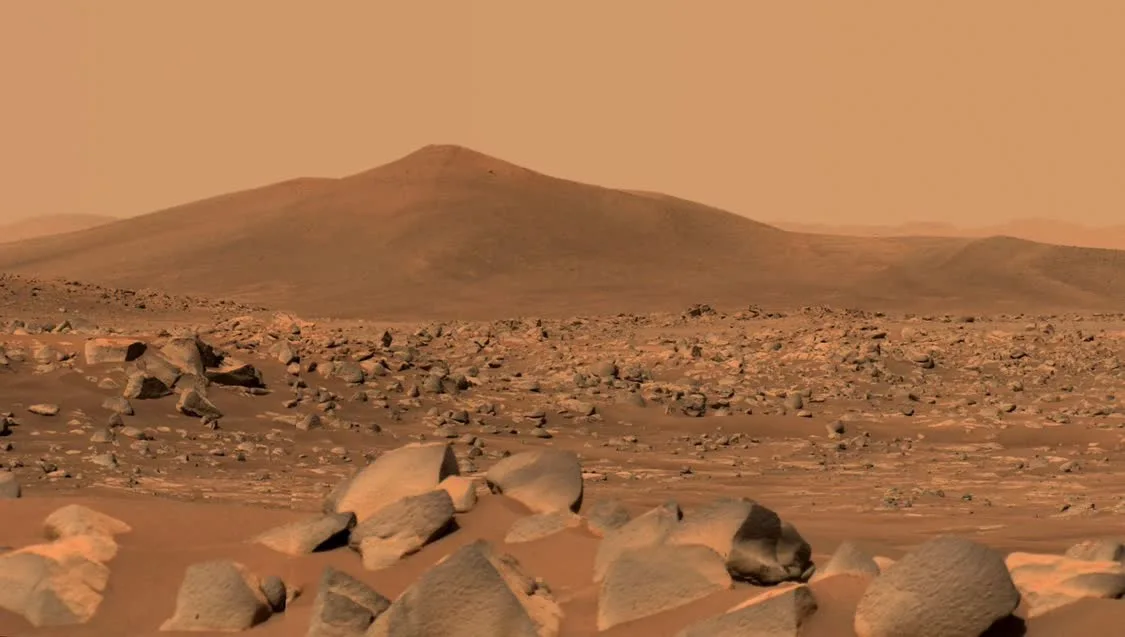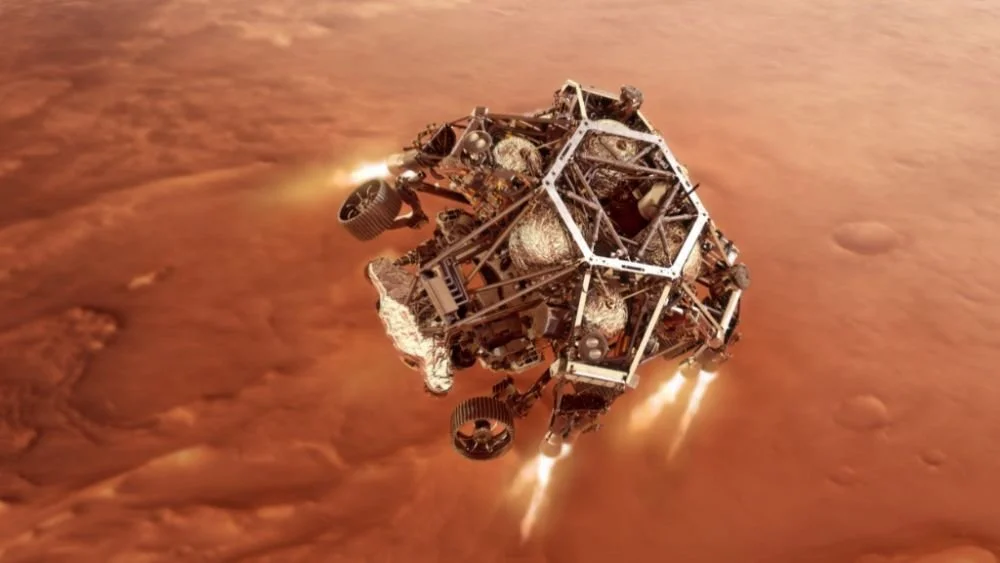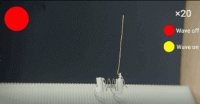The Perseverance probe took measurements and samples in an area called the Skinner Ridge, which is made up of layered sedimentary rocks that contain some material likely billions of years ago, the researchers said. It was transported by running water from hundreds of kilometers away.
Thomas Zubchen, head of NASA’s science division, said: “The samples we are now taking in this depositional region help to shed light on the central question of whether there is life on Mars.”
On February 18, 2021, the American “Perseverance” rover successfully landed on Mars and will look for signs of life that may have existed on Mars.
These sedimentary rocks contain complex organic molecules called aromatics, as well as clay and sulfate minerals, which are created when water interacts with the rock. While none of these substances are signs of life — so-called biosignatures — they do mean that scientists are in the right place. “This is very important because it contains sulfates and clays, and this rock preserves biosignatures very well,” said one of the researchers, David Schuster of the University of California, Berkeley.
The presence of organic matter became increasingly common as Perseverance drove through the crater, the researchers said. “If this is a treasure hunt for potential signs of life on another planet, organic matter is a clue,” said Sunanda Sharma of NASA’s Jet Propulsion Laboratory. “As the Perseverance mission to Delta continues to advance, we are There are more and more clues.”
Still, scientists would need to send those samples back to Earth to be sure. It is reported that NASA and the European Space Agency will launch two spacecraft to Mars in 2026, one of which will land on Mars in 2028, and will receive the samples from Perseverance. The spacecraft will then launch the sample into Mars orbit for a third spacecraft, which will return to Earth in 2031.
It should be noted that, earlier this year, Perseverance also detected the sound from Mars for the first time. According to Science and Technology Daily in April, the British “Nature” magazine reported a planetary science study, scientists’ analysis of acoustic measurements on Mars revealed the speed of two kinds of sound in a carbon dioxide-dominated atmosphere. The sounds were detected by NASA’s Perseverance rover to Mars. These results suggest that measurements of sound may help study planetary atmospheres and raise the possibility of understanding the acoustic environments of other planets.

On May 12, 2021, NASA released a photo of the Martian hill “Santa Cruz” taken by Perseverance on April 29 with the Perseverance Mast Camera Mastcam-Z.
Acoustic recordings on planets may allow us to understand the source of sound and the atmosphere through which it travels. Past Mars missions have attempted to record sound, but have been unsuccessful. The microphone on the “Mars Polar Lander” was lost when it entered the Martian atmosphere, and the spacecraft microphone on the “Phoenix” Mars rover also encountered technical difficulties.
This time, scientists from the French Research Center for Astrophysics, the University of Toulouse, the French National Center for Scientific Research, and the French National Center for Space Research reported that the microphone of the “Perseverance” Mars rover provided the Martian acoustic environment for the first time. Characteristics in the inaudible range (frequency from 20 Hz to 50 kHz). A total of 4 hours and 40 minutes of Martian sounds were analyzed, including wind-induced air turbulence, the sound of sparks as the rover splits rocks with lasers to study the chemical signature of the planet, and other noises from the rover’s machinery. Perseverance’s microphones detect changes in wind speed based on changes in sound intensity. These measurements revealed pressure fluctuations with frequencies greater than 20 Hz, which had never been obtained on Mars before.
The speed of sound at different frequencies can be measured by direct analysis of the sound produced by the laser and Wit, a small robotic helicopter. The high-frequency sound waves (frequency above 2 kHz) produced by the laser pulses have a speed of between 246 and 257 meters per second, while the speed of the lower frequency sound waves (about 84 Hz) produced by the “Wit” fan blades is estimated to be 240 meters. These measurements are consistent with predicted velocities based on knowledge of Martian pressure and carbon dioxide’s sound-attenuating properties.
Further measurements of wind speeds over time and seasons may shed more light on studying changes in the Martian atmosphere, and the recorded lander sounds could be used to check the rover’s systems, the team concluded.




GIPHY App Key not set. Please check settings